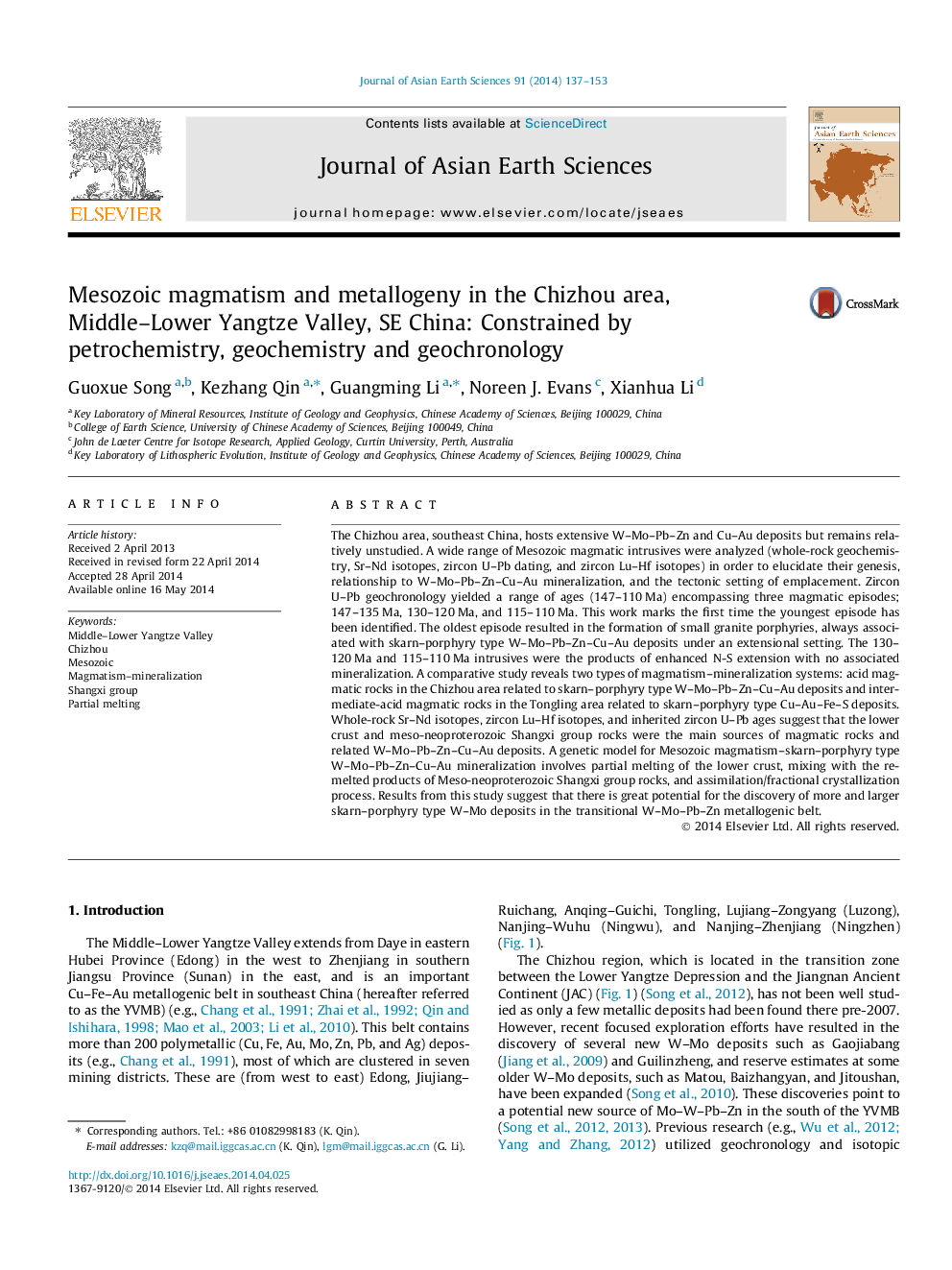| کد مقاله | کد نشریه | سال انتشار | مقاله انگلیسی | نسخه تمام متن |
|---|---|---|---|---|
| 4730554 | 1640377 | 2014 | 17 صفحه PDF | دانلود رایگان |
• Three episodes of intrusions were identified in the Chizhou area.
• The 147–135 Ma intrusions were associated with W–Mo–Pb–Zn–Cu–Au deposits.
• Two types of magmatism–mineralization systems were recognized in the study area.
• Remelting of lower crust and Shangxi group rocks, and AFC were the dominant process.
The Chizhou area, southeast China, hosts extensive W–Mo–Pb–Zn and Cu–Au deposits but remains relatively unstudied. A wide range of Mesozoic magmatic intrusives were analyzed (whole-rock geochemistry, Sr–Nd isotopes, zircon U–Pb dating, and zircon Lu–Hf isotopes) in order to elucidate their genesis, relationship to W–Mo–Pb–Zn–Cu–Au mineralization, and the tectonic setting of emplacement. Zircon U–Pb geochronology yielded a range of ages (147–110 Ma) encompassing three magmatic episodes; 147–135 Ma, 130–120 Ma, and 115–110 Ma. This work marks the first time the youngest episode has been identified. The oldest episode resulted in the formation of small granite porphyries, always associated with skarn–porphyry type W–Mo–Pb–Zn–Cu–Au deposits under an extensional setting. The 130–120 Ma and 115–110 Ma intrusives were the products of enhanced N-S extension with no associated mineralization. A comparative study reveals two types of magmatism–mineralization systems: acid magmatic rocks in the Chizhou area related to skarn–porphyry type W–Mo–Pb–Zn–Cu–Au deposits and intermediate-acid magmatic rocks in the Tongling area related to skarn–porphyry type Cu–Au–Fe–S deposits. Whole-rock Sr–Nd isotopes, zircon Lu–Hf isotopes, and inherited zircon U–Pb ages suggest that the lower crust and meso-neoproterozoic Shangxi group rocks were the main sources of magmatic rocks and related W–Mo–Pb–Zn–Cu–Au deposits. A genetic model for Mesozoic magmatism–skarn–porphyry type W–Mo–Pb–Zn–Cu–Au mineralization involves partial melting of the lower crust, mixing with the re-melted products of Meso-neoproterozoic Shangxi group rocks, and assimilation/fractional crystallization process. Results from this study suggest that there is great potential for the discovery of more and larger skarn–porphyry type W–Mo deposits in the transitional W–Mo–Pb–Zn metallogenic belt.
Journal: Journal of Asian Earth Sciences - Volume 91, September 2014, Pages 137–153
